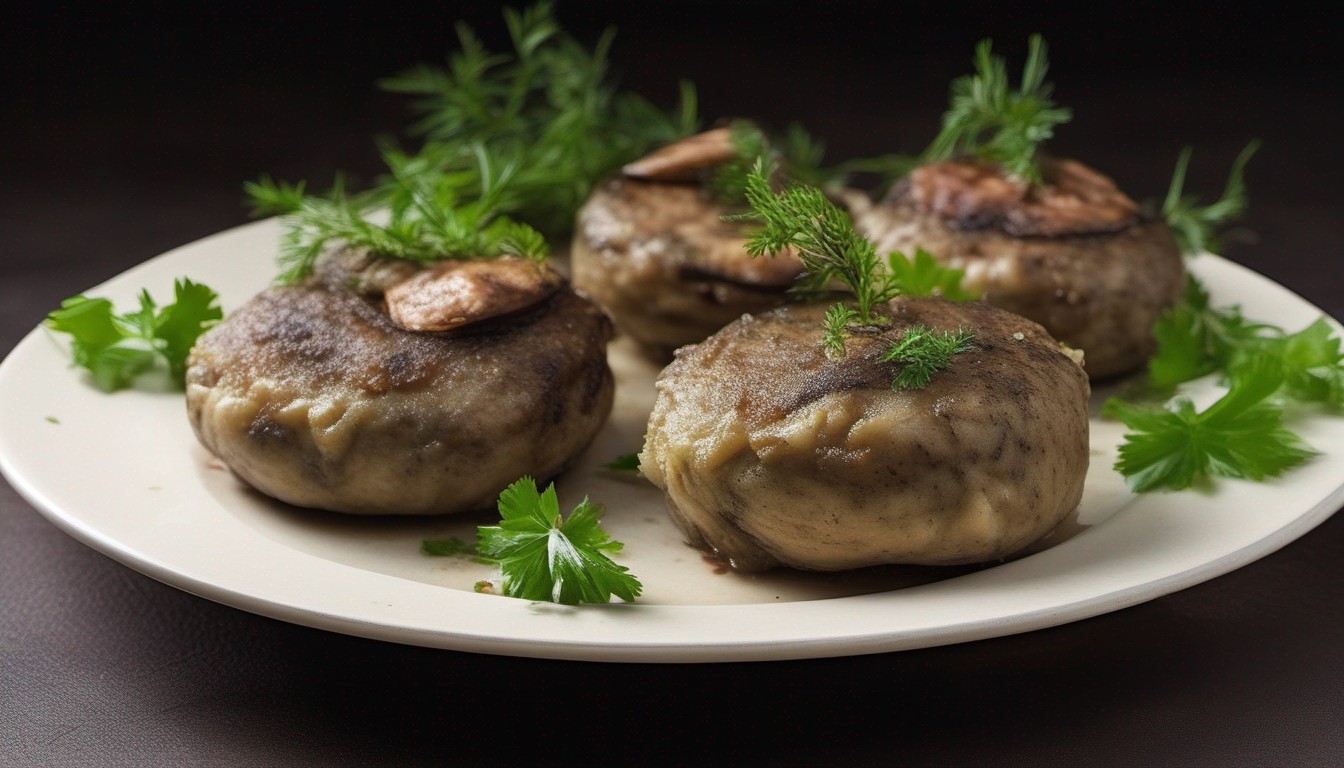Mushrooms in cow patties, also known as fungal growth in bovine manure, is a fascinating phenomenon that has intrigued researchers and nature enthusiasts alike. This unique relationship between mushrooms and cow feces provides a fertile environment for fungal spores to colonize and thrive. Understanding the intricate process of mushroom formation in cow patties can provide valuable insights into the roles fungi play in nutrient cycling and ecosystem dynamics. In this blog post, we will take a closer look at the factors that contribute to the growth of mushrooms in cow manure and explore the potential benefits and implications of this natural phenomenon.
Understanding the Role of Fungi in Cow Patties
In a symbiotic relationship with cow dung, fungi play a pivotal role. This relationship involves fungi breaking down complex organic matter in cow patties, facilitating nutrients’ return to the soil ecosystem.
Fungi’s contribution to cow dung decomposition is truly remarkable. They consume hard-to-digest cellulose and lignin, promoting the recycling of these compounds into their simpler forms, hence fostering the sustainability of surrounding environs.
What Are Fungi?
Unraveling the enigma that fungi represent entails diving deep into the biology of these microorganisms. Notably, fungi are eukaryotic organisms that exhibit exceptional abilities to decompose organic matter and help in recycling nutrients, which sets them apart from other life forms.
Fungi, with their exceptional ability to decompose organic matter and recycle nutrients, play critical roles in maintaining ecological balance by promoting nutrient cycling in various ecosystems.
Characteristics such as having chitin in their cell walls, exhibiting mycelial growth, and reproduction via spores are distinguishing traits of fungi. These unique attributes underscore their critical roles in the environment, particularly regarding nutrient cycling in ecosystems like cow patties.
The Importance of Fungi in Ecosystems
Serving as indispensable custodians of the ecosystem, fungi enact a balancing act. With a crucial role in nutrient cycling, they contribute to the overall health and resilience of ecosystems.
Fungi stand as crucial drivers for organic matter recycling, deconstructing complex organic materials into accessible nutrients. This recycles elements, inevitably promoting lush plant growth and biodiversity.
How Fungi Colonize Cow Patties
Fungi colonization in cow patties is sparked by an intriguing journey of spores, which are carried by wind or insects to the manure. Upon landing, these spores germinate to colonize the cow patty, initiating an essential recycling process.
It is a space of fierce competition, as different fungal species vie for the same resource. The dominant species can vary, influenced by different factors, yet each plays a significant role in the decomposition and nutrient recycling within the cow patty.
Types of Fungi Found in Cow Patties

Bovine manure often plays host to an array of fungi species, predominantly Pilobolus and Coprinus and occasionally Mycena and Psilocybe. These species, specifically adapted to thrive amidst the manure’s nutrient-rich environment, are seemingly ubiquitous.
The fungi in cow patties exude uniqueness. Pilobolus, for instance, ‘shoots’ its spores towards the light, while Mycena glows in the dark. Psilocybe, known for its psychoactive properties, and Coprinus, boasting its bell-shaped fruit body, further intensify the intrinsic diversity among fungi in bovine manure.
Common Types of Fungi
Fungi’s fascinating complexities extend to cow patties, a hub of numerous diverse types. This rich biological diversity is an unexpected benefit of bovine excreta.
- Ascomycetes: Known as sac fungi, common examples include yeasts and morels.
- Basidiomycetes: Often recognized as the classic mushroom shape, these include shiitake mushrooms and other edible varieties.
- Deuteromycetes: These fungi have lost the ability to reproduce sexually, and are referred to as fungi imperfecti.
- Zygomycetes: Commonly found in decomposing matter, includes bread mold and other types of molds.
Edible Fungi
Amidst the vast array of fungi thriving in cow patties, some serve more than an environmental purpose. They present as culinary delights and can be considered as edible treasures in unusual places, enriching our gastronomic adventures.
- Psilocybe cubensis: Known for its psychoactive properties, it is also edible when properly cooked.
- Panaeolus cinctulus (commonly referred to as Panaeolus subbalteatus): Found in cow dung worldwide, this fungus is commonly used in cooking.
- Coprinus comatus (Shaggy Mane): This delectable fungus is often spotted in cow manure and is a favorite among mushroom enthusiasts due to its unique flavor.
- Agaricus campestris (Meadow Mushroom): As the name suggests, it flourishes in meadows, frequently growing from cow dung.
- Calvatia gigantea (Giant Puffball): Though not exclusively from cow dung, these puffballs can be found there and are considered a delicacy when young and fresh.
Pathogenic Fungi
Turning our attention to pathogenic fungi, these microorganisms, while fewer in bovine manure, can pose a potential threat to both agricultural productivity and livestock health.
- Pathogenic fungi can cause disease in plants, affecting crop yield
- Livestock diseases caused by pathogenic fungi can lead to economic loss
- Preventive measures are necessary to control the spread of pathogenic fungi in cow patties
- Timely identification of pathogenic fungi can help protect livestock health
- Implementing proper hygiene and sanitation practices in farms can help curb the proliferation of pathogenic fungi.
Factors Affecting Fungal Growth in Cow Patties

Dissecting the factors contributing to fungal growth in cow patties reveals a complex interplay between environmental conditions and the physical-chemical constitution of the manure. Factors such as ambient temperature, moisture content, and the availability of nutrients can significantly influence the rate and scope of fungal proliferation.
Consideration of biophysical attributes is pivotal to understand the proliferation of fungi in cow patties. Temperature, moisture, and nutrient levels create an idyllic milieu for growth, presenting a hospitable environment or a challenging terrain, contingent on these variations.
Temperature
Dramatic changes in temperature can significantly impact fungal development within bovine manure. This is particularly noticeable during periods of cool or warm extremes, where a temperature spike or drop may hinder the growth of some fungal species, while favoring others.
Seasonal changes influence the bloom of fungi in cow patties, which typically tend to flourish in milder temperatures. As the seasons change from winter to spring or summer to fall, the increase or decrease in temperatures can lead to a burst of fungal activity.
Conversely, very low or high temperatures can stifle fungal propagation. Under these conditions, only the heartiest species survive, underscoring the adaptability of these organisms in fluctuating climates.
Seasonal shifts, daily temperature changes, and climate variability all play critical roles in dictating the abundance and diversity of fungi in cow patties, greatly impacting the ecosystem at a micro and macro level.
Moisture
Moisture propels fungal growth in cow patties, creating an enabling environment for their spores to germinate, colonize, and eventually bear fruit bodies (mushrooms). This moisture comes about as a natural product of bovine digestion and excretion.
Yet, fluctuating moisture levels highlight a complex relationship with mushroom development. With insufficient moisture, fungal sporulation stunts; but, in overly damp situations, common fungal inhabitants may struggle against waterlogged conditions.
All told, moderating moisture achieves an ideal balance, harnessing the key role it plays in fostering healthy fungal populations, while preventing possible pitfalls associated with overly dry or waterlogged manure habitats.
Nutrient Availability
Nutrient availability within bovine manure significantly influences the diversity and growth of fungi. High nutrient content often coincides with a more diverse collection of fungi, as an array of nourishing elements allows for various species to thrive.
The nutrient composition of cow patties directly impacts which types of fungi grow. Certain species require specific nutrients and will not develop without their presence, explaining why some fungi are commonly found in cow patties while others are not.
While some fungi can adapt to lower nutrient conditions, the majority need a rich environment to thrive. Nutrient-poor cow patties can lead to the domination of a single or few species, thus reducing fungal diversity.
Benefits of Fungal Growth in Cow Patties
A vibrant tableau of ecological benefits emerges when exploring the proliferation of mushrooms in cow manure. These humble fungi, often unrecognized, are catalysts for essential nutrient recycling, fortifying soils while suppressing plant diseases.
The fungi flourishing in cow patties are the silent facilitators of ecosystem health. By mobilizing nutrients and ensuring their effective dissemination, these hardworking microorganisms make a subtle yet significant contribution to biodiversity and sustainability.
Nutrient Recycling
Fungi play a prominent part in nutrient recycling within cow dung. Through decomposition, the fungi transform complex organic compounds into simpler substances, making nutrients available once more to the surrounding environment.
Providing a valuable service within bovine manure, fungi drive the nutrient recycling process. They break down the undigested remains and thereby ensure the return of vital nutrients to the soil.
By harnessing the power of fungi within cow dung, an efficient nutrient recycling system is created. This microbiota-powered mechanism sees compounds broken down and nutrients effectively redistributed.
Soil Conditioning
Fungi in cow dung play a crucial role as natural soil conditioners. They assist in transforming the manure into a nutrient-rich, loamy substance, which aids in overall soil health.
Through their complex decomposition process, these fungi break down the organic matter in cow patties, ultimately enhancing soil texture.
The end products of this fungi-led process enrich the soil, replenishing essential nutrients thereby bolstering soil fertility.
These fungi, originating from cow patties, not only improve soil structure but foster a conducive environment for plant growth and boost agriculture productivity.
Disease Suppression
Through their intricate systems and strategies, fungi in cow manure suppress a variety of plant diseases. Their robust growth within the manure creates an antagonistic environment which deters pathogenic microorganisms, hence, ensuring healthier plant life.
The science that unravels disease suppression by bovine manure fungi is intriguing. These fungi produce compounds and enzymes that halt disease progression in plants. They also effectively outcompete harmful pathogens for nutrients and space, thereby stunting their growth.
Surprisingly, the suppression process is largely an ecological phenomenon, predicated primarily upon competition among microorganisms. The more dominant and beneficial fungi crowd out pathogens, creating an equilibrium that favers plant health. The end result: healthier, disease-free soils and plant growth.
Potential Risks or Concerns

There are potential risks and concerns associated with the presence of fungi in cow patties. Notably, certain fungi can produce harmful mycotoxins which may cause health problems in both livestock and humans.
The ecological implications of fungi in bovine dung can be troubling. Undesirable pathogenic fungi can negatively impact the health and productivity of grazing animals, making the understanding and management of such growth crucial in agricultural contexts.
Mycotoxins
Ironically, fungi lurking in bovine manure present hidden threats in the form of mycotoxins. These poisonous metabolites, produced by some fungi, can pose insidious risks, acting as a ticking time bomb in livestock health.
The connection between fungi in cow patties and mycotoxin production cannot be understated. The natural biodegradation process allows for the growth of these fungal species, consequently leading to mycotoxin generation that presents health threats to grazing animals.
Negative Effects on Grazing Animals
Through their feeding, sponging, and trampling, grazing animals play a role in dispersing and initiating fungi in cow patties. On the flip side, such interactions may expose livestock to harmful fungi, thus having potential negative health implications.
Not all fungi found in bovine manure present a friendly face. Some, especially pathogenic species, can spell trouble for grazing animals when ingested or inhaled, resulting in ailments like digestive problems and respiratory infections.
Veterinarians and livestock owners need to beware of ‘grazing field mines’ – clusters of bovine manure abundant in hazardous fungi. As livestock graze, they may incidentally consume these fungi, potentially leading to serious health conditions.
Unfortunately, some fungi produce deadly mycotoxins – toxic secondary metabolites. When consumed by grazing animals, these toxins can lead to progressive ailments, reduced productivity, or even premature death in severe cases.
In a nutshell, while fungi growing in cow patties play an essential role in ecosystems and soil health, they can pose significant risks to grazing animals. Constant monitoring and management strategies can help mitigate these associated dangers.
FAQs about Mushrooms in Cow Patties
Explore the fascinating world of fungi and discover the significant role of ‘mushrooms in cow patties’ in contributing to nutrient recycling and soil conditioning.
Mushrooms in cow patties are a captivating natural phenomenon where certain species of fungi thrive in the environment created by cow manure. This symbiotic relationship between mushrooms and cow feces plays a crucial role in nutrient cycling, as the fungi break down the organic matter and release valuable nutrients back into the soil. This not only enriches the soil, but also promotes the growth of other plants in the ecosystem.
Here are some frequently asked questions about mushrooms in cow patties:
1. What are mushrooms in cow patties?
Mushrooms in cow patties refer to the growth of fungi in bovine feces, creating a symbiotic relationship that aids in nutrient recycling and ecosystem balance.
2. How do mushrooms grow in cow patties?
Mushroom spores present in the environment colonize the cow manure, breaking down organic matter and releasing nutrients that support mushroom growth.
3. What are the benefits of mushrooms in cow patties?
The presence of mushrooms in cow patties helps in nutrient cycling, enriching the soil with essential elements and promoting the growth of other plants.
4. Why are mushrooms in cow patties important for soil conditioning?
Mushrooms play a crucial role in improving soil structure and enhancing its ability to retain water, creating a healthier and more fertile environment for plant growth.
5. Can mushrooms in cow patties be harmful?
While most mushrooms in cow patties are not harmful, it is essential to accurately identify any wild mushrooms before consumption, as some species can be toxic.
6. How can we encourage the growth of mushrooms in cow patties?
Providing suitable conditions, such as moisture and shade, can encourage the growth of mushrooms in cow patties. Avoiding the use of chemical fertilizers and maintaining a healthy ecosystem can also support their growth.
7. What can we learn from the presence of mushrooms in cow patties?
Studying mushrooms in cow patties provides insight into the complex web of interactions in ecosystems and highlights the importance of fungi in nutrient cycling and maintaining ecological balance.
8. Are mushrooms in cow patties found only in specific regions?
Mushrooms in cow patties can be found in various regions where cattle are raised, making it a fascinating natural occurrence worldwide.
9. Can mushrooms in cow patties be utilized for other purposes?
Yes, mushrooms in cow patties can be collected and used for culinary purposes, medicinal applications, or even for cultivation in controlled environments.
10. How can we appreciate and protect the presence of mushrooms in cow patties?
By understanding their ecological importance, we can appreciate the role of mushrooms in cow patties and advocate for sustainable farming practices that preserve and enhance their presence in our ecosystems. Emphasizing the importance of maintaining healthy soil and ecosystems can safeguard the continued growth and benefits of mushrooms in cow patties.
Conclusion
In encapsulating the extraordinary role of fungi in cow patties, it is evident that they serve an overarching purpose in nutrient recycling, soil conditioning, and disease suppression. Their existence in bovine manure illustrates their relevance in maintaining ecological balance.
The exploration of the fungi realm in bovine manure unlocks avenues towards a better understanding of natural recycling systems. Indeed, despite potential risks, the benefits of the growth and proliferation of various fungi types in cow patties continue to prove substantial.
- Continual effort to understand nutrient availability.
- The need for further studies on potential pathogenic fungi in cow patties.
- Finalise strategies for controlling or harnessing mycotoxins.
- Year on year increase in the prevalence of fungi in cow patties.
- Deep dive into the complexities of disease suppression by cow patty-dwelling fungi.

